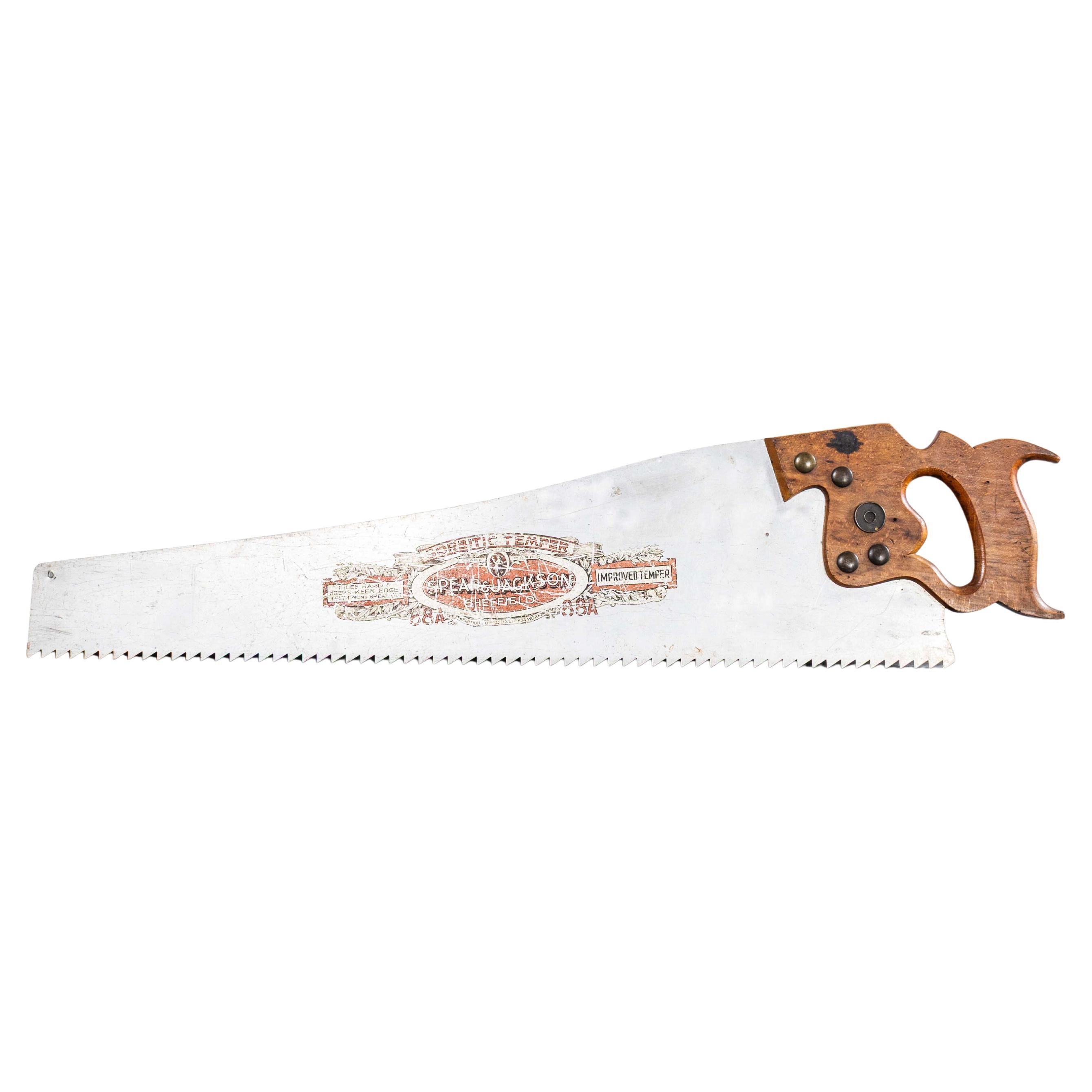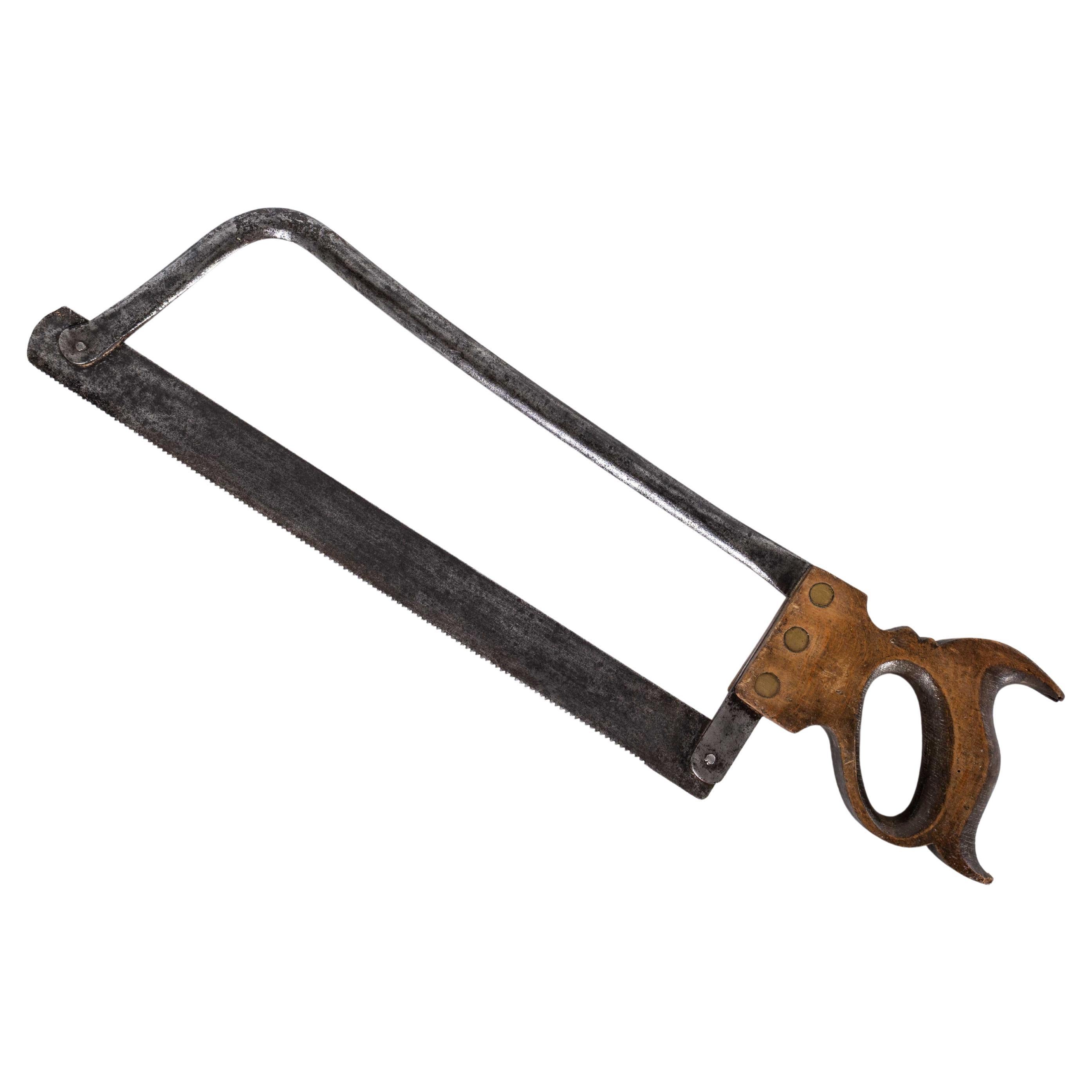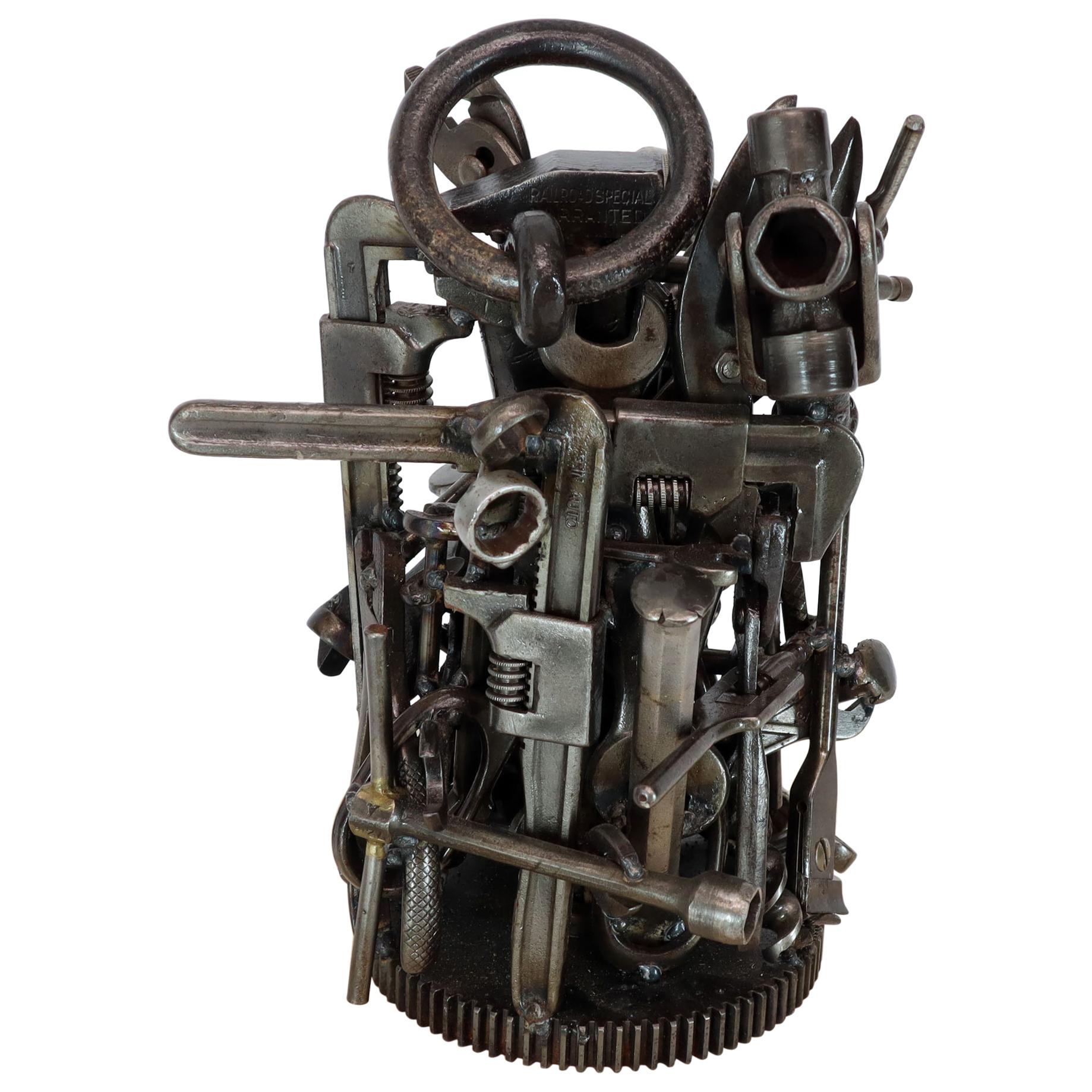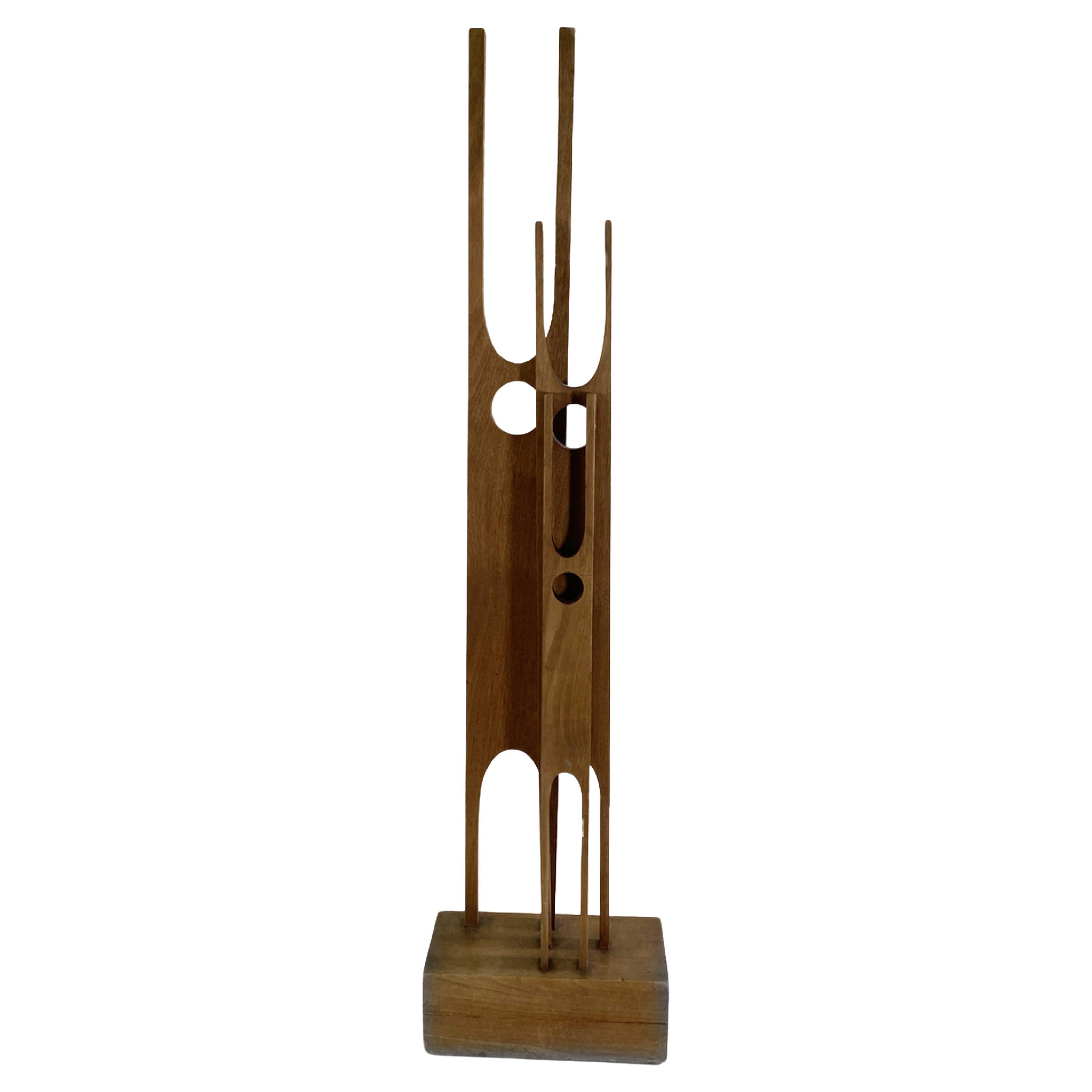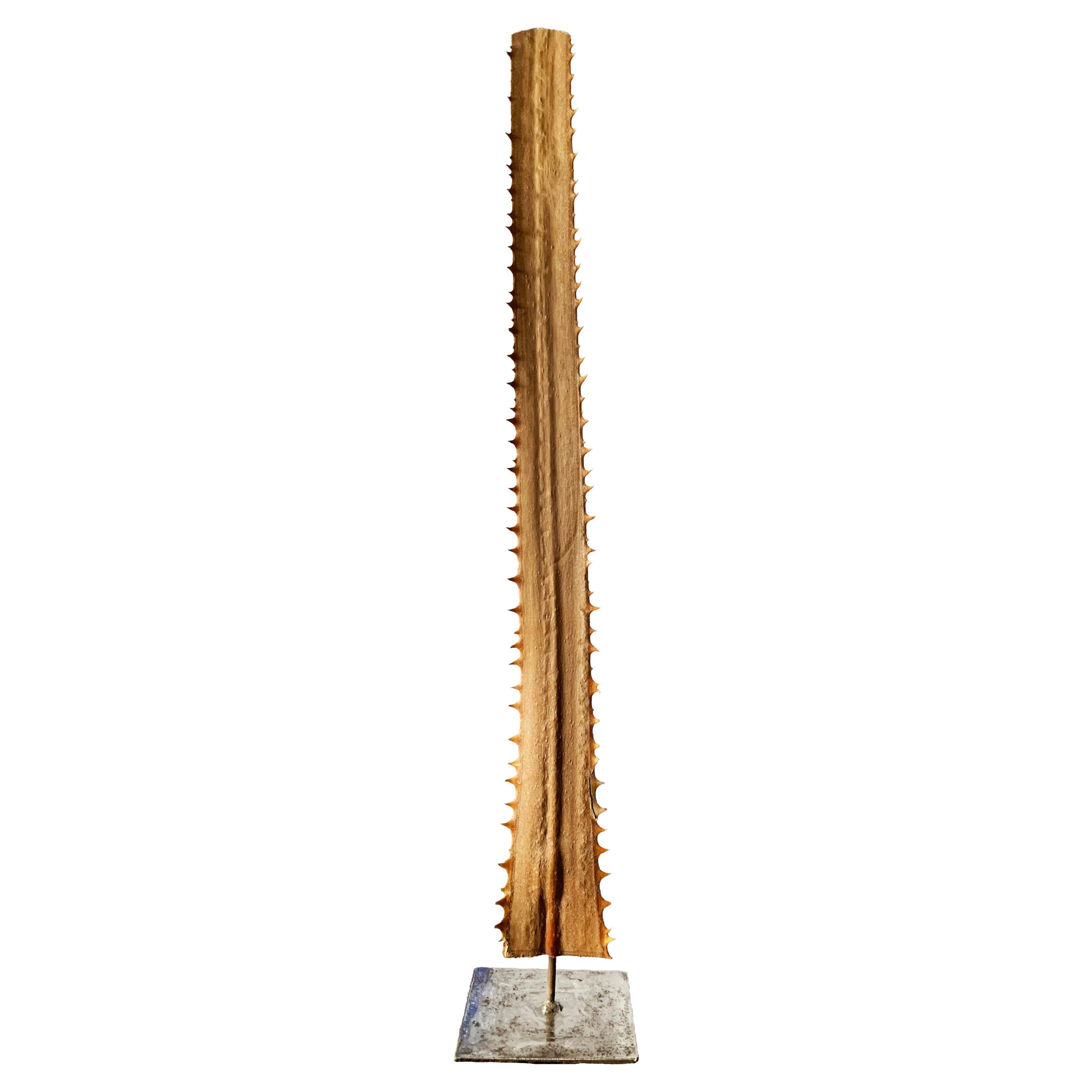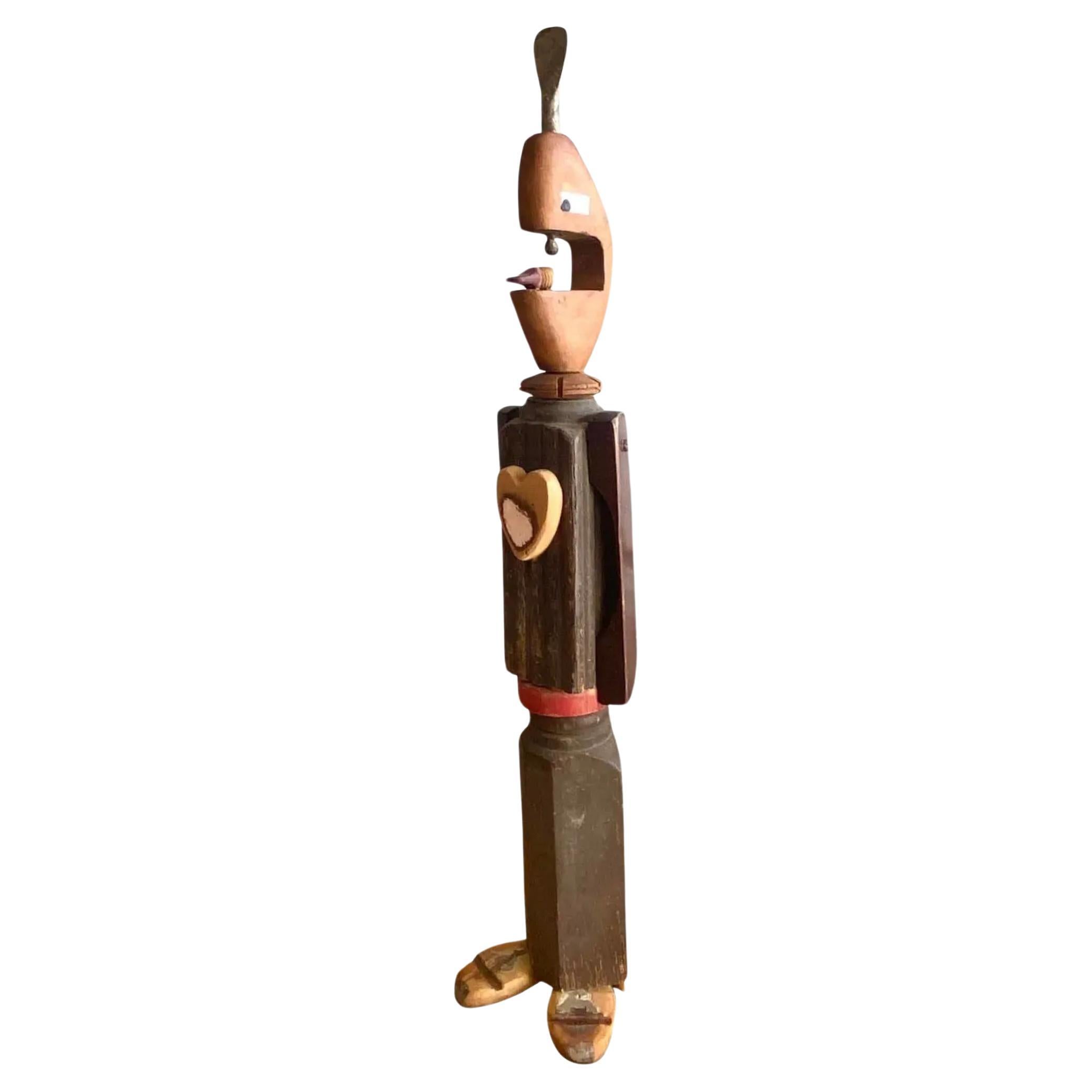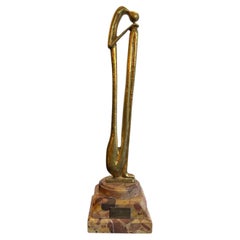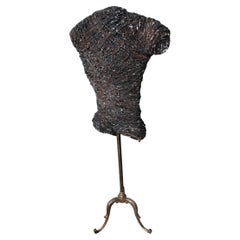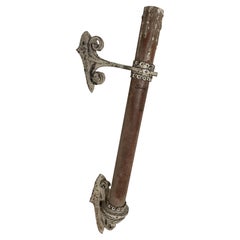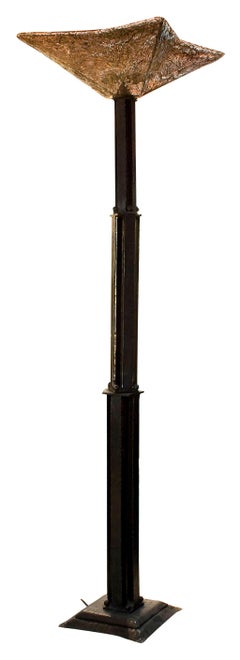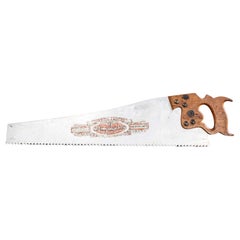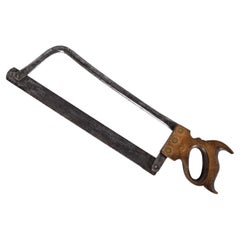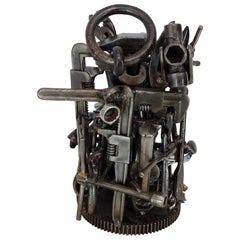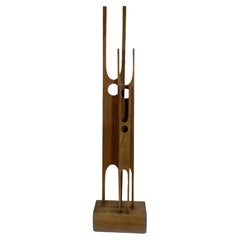Items Similar to Oversized Saw with (Don't wait for your opportunity, get up and work hard)
Video Loading
Want more images or videos?
Request additional images or videos from the seller
1 of 21
Oversized Saw with (Don't wait for your opportunity, get up and work hard)
$12,000
£9,145.94
€10,454.39
CA$16,883.24
A$18,495.07
CHF 9,735.08
MX$220,743.50
NOK 124,097.69
SEK 113,443.99
DKK 78,092.42
About the Item
Oversized Saw Advertising Display Sign
With the phrase in Spanish (Don't wait for your opportunity, get up and work hard) / (No esperes tu oportunidad levantate y trabaja duro).
Why are there so many antiques in Argentina?
In the 1880 – 1940 there was a grate wave of immigration encouraged by the periods of war that were taking place.
1st World War took place between 1914 and 1918
2nd World War took place between 1939 and 1945
The immigrants options were New York or Buenos Aires. Tickets were cheap and in Buenos Aires they were welcomed with open arms, as it was a country where everything was still to be done.
Argentina was the country of new opportunities, labour was needed and religious freedom was assured, in many cases the of the family travel first until they were settled and then the rest of the family members join them.
In the immigrant museum “Ellis Island Immigrant Building” in New York you can se the promotional posters of the boats that would take them to a new life.
Between the years 1895 and 1896, Argentina had the highest DGP (gross domestic product) per capita in the world according to the Maddison Historical Statistics index, this situation arose due to the large amount of food being exported to European countries, which were at war.
The Argentinean ships left the port of Buenos Aires with food, but they returned with furniture, clothes and construction elements, (it´s common to see this the old buildings of the historic neighbourhood of San Telmo, the beams with the inscription “Made in England)”, as well as many markets that were built in Buenos Aires, such us the San Telmo Market, whose structure was brought by ship and afterwards assembled in 900 Defensa Street.
With the great influence of European immigrants living in the country, the children of the upper classes travelled to study in France, resulting in the inauguration of “La Maison Argentinienne”, on 27th of June 1928, in the international city of Paris, which hosted many Argentinians that were studying in Frace.
It´s the fourth house to be built after France, Canada and Belgium, being the first Spanish-speaking one. Still in place today (17 Bd Jourdan, 75014, Paris, France). Many of the children of these wealthy families who attended international art exhibitions, museums and art courses abroad, took a keen interest in the European style. This is why Buenos Aires was at the time referred as “The Paris of South America”.
Between the years 1890 and 1920 more than a hundred Palaces were built on Alvear Avenue the most exclusive avenue in Buenos Aires. Today some of these palaces have been transformed into museums, hotels and embassies.
In the year 1936, the Kavanagh building was inaugurated, it was the tallest reinforced concrete building in South America.
During 1994 the American Society of Civil Engineers distinguished it as an “international engineering milestone”, and it´s now considered a World Heritage of Modern Architecture.
At the time was common to hire foreign architects such as Le Corbusier, who visited Buenos Aires/Argentina in 1929 and in 1948 he drew up the blueprints for a house built in La Plata City (which was declared a World Heritage Site).
In 1947, the Hungarian architect Marcelo Breuer designed “Parador Ariston” in the seaside city of Mar del Plata. After an Argentinean student at Harvard University convinced him to come to Argentina. He worked on an urban development project in the Casa Amarilla, area of La Boca.
The Ukrainian architect, Vladimiro Acosta, arrives in Argentina in 1928 and worked as an architect until que moved to Brazil.
Antonio Bonet, a Spanish architect who worked with Le Corbusier in Paris, arrives in Argentina in 1937, where he carried out several architectural works and in 1938 designs the well-known BFK chair.
Andres Kálnay, of Hungarian origin, made around 120 architectural masterpieces, among which the former Munich brewery stands out, he even made the furniture’s design.
The German architect, Walter Gropius, director of the Bauhaus, lived in Argentina, where he wrote articles for “Sur” magazine and founded in Buenos Aires, an architectural firm with Franz Möller, who was also an architect, where he built two houses.
At the same time several famous designers decided to immigrate to Argentina, among them we can find the well-known French designer, Jean-Michel Frank, who arrived in the country in 1940 and also worked for the Rockefeller family.
Special pieces were made, which were sold exclusively in the country, such as the well-known German company “WMF”, who sold their products by catalogue, which were chosen by the ladies of high society in the list of wedding gifts, as well as the pieces designed by Christofle.
The Swiss sculptor Alberto Giacometti, made special pieces for Argentinean mansions.
In 1904 the first Jansen branch outside Paris was established in Buenos Aires, as the Argentinean clientele demanded a large amount of furniture, from the end of the 19th century to the mid-20th century.
In 1970, the brand Rigolleau Argentina made pieces authorised by Lalique.
The brands Maple and Thompson also set up shop in the country.
The French plastic artist, Marcel Duchamp moved to Argentina in 1918-1919.
Glass signed Gallé, Charder, Leverre, Schneider, Muller and other French firms. They were bought in flower shops and were given to ladies with beautiful floral arrangements.
Some furniture manufacturers travelled to international fairs and bough the patterns to produce the furniture in Argentina, such as the furniture firm Englander and Bonta, who bought the patterns ins Italy.
It is worth mentioning that in Argentina we have the largest community of Italians outside of Italy, as it is estimated that 70 percent of the inhabitants have at least one Italian descendant, followed by Spanish immigrants.
The most Important furniture stores in Argentina:
Comte is founded in 1934 (under the direct management of Jean Michel Frank in 1940).
Nordiska (Swedish company established in 1934).
Churba in 1960, a company that brought foreign designers to present their furniture in the country:
Denmark: (Arne Jacobsen, Finn Juhl, Bender Madsen, Ejner Larsen, Poul Kjaerholm, Hans Wegner)
Sweden: (Hans Agne Jakobsson, Gustavsberg)
United States: (Herman Miller)
Finland: (Lisa Johansson, Folke Arstrom, Tapio Wirkkala, Alvar Aalto, Timo Sarpaneva)
Swedish Factory: (Orrefors)
Italy: (Littala, Vico Magistretti, Emma Gismondi, Gae Aulenti, Angelo Mangiarotti, Elio Martinelli, Gianna Celada, Angelo Mangiarotti, Mario Bellini, Carlo Scarpa)
Finland: (Olivia Toikka)
Plata Lappas (Lappas Silver): a goldsmith shop founded in 1887 in Argentina by Alcibiades Lappas of Greek origin.
In 2019, in Argentina took place “the Art Deco world congress”, in which we participated as hosts invited by Geo Darder, founder of the Copperbridge – Foundation, in which prominent people from all over the world attended to learn about Art Deco in Argentina.
Argentina currently has more than 100 Art Deco buildings and another 90 Art Nouveau buildings throughout the city of Buenos Aires.
Argentina is a country that has not been involved in many wars, which is why it has been a refuge for works of art and antiques from different periods of time, unlike European countries. That is way many collectors, museums and antique dealers from all over the world visit it, you should not miss the opportunity to visit this great country.
Laura Guevara Kjuder, architect.
- Dimensions:Height: 79.53 in (202 cm)Width: 14.57 in (37 cm)Depth: 0.99 in (2.5 cm)
- Style:Mid-Century Modern (In the Style Of)
- Materials and Techniques:
- Place of Origin:
- Period:
- Date of Manufacture:1950
- Condition:Wear consistent with age and use.
- Seller Location:Ciudad Autónoma Buenos Aires, AR
- Reference Number:1stDibs: LU6785245431912
About the Seller
5.0
Vetted Professional Seller
Every seller passes strict standards for authenticity and reliability
Established in 1982
1stDibs seller since 2022
40 sales on 1stDibs
Typical response time: <1 hour
- ShippingRetrieving quote...Shipping from: Ciudad Autónoma Buenos Aires, Argentina
- Return Policy
More From This Seller
View AllDesing: Carlos de Lamota, Materials: Bronze and marble, Style : Art Deco
Located in Ciudad Autónoma Buenos Aires, C
Design: Carlos de Lamota
He was born on August 13, 1924, in the Province of San Juan, Argentina. His passion for art began at a very early age. At 11, he attended Anita Volspranky’s ...
Category
Vintage 1970s Argentine Mid-Century Modern Animal Sculptures
Materials
Marble, Bronze
Man's Torso Sculpture
Located in Ciudad Autónoma Buenos Aires, C
Sculpture
Year: 1970
Material:metal and bronze
We have specialized in the sale of Art Deco and Art Nouveau and Vintage styles since 1982. If you have any questions we are at your ...
Category
Vintage 1970s Unknown Mid-Century Modern Busts
Materials
Bronze, Metal
$28,000 / item
Sconce Art Deco, 1930, "Attributed to Gilbert Poillerat", France
By Gilbert Poillerat
Located in Ciudad Autónoma Buenos Aires, C
Style: Art Deco
Material: iron and wood
Country: France
We have specialized in the sale of Art Deco and Art Nouveau and Vintage styles since 1982. If you have any questions we are at your disposal.
Pushing the button that reads 'View All From Seller'. And you can see more objects to the style for sale.
"Attributed Gilbert Poillerat"
There have been many important French designers associated with Art Deco and through the 1930’s, ’40’s and beyond who worked in wrought iron. One usually thinks of Edgar Brandt, Raymond Subes, and Paul Kiss. For quite a while, when Art Deco was enjoying its first flush of recognition in the 1970’s, Gilbert Poillerat remained relatively unknown. This would soon change as the natural progression of design exploration began to move into the 1930’s and beyond, and Poillerat would emerge as one of the most original and important designers of his time.
Gilbert Poillerat was born in 1902 in a small town in France that, oddly, had three names – Mer, Loir et Cher. Like many other furniture designers, he attended the famed École Boulle, where he trained as a metal chiseler and engraver, graduating in 1921.
Following his graduation, he worked with arguably the best and most influential wrought-iron master – Edgar Brandt. He worked for Brandt for over seven years in both design and production. There can be no doubt that this time was hugely important, not only in furthering his training and perfecting his technique, but also exposing him to the new ideas that had blossomed forth during the Art Deco movement, when wrought-iron escaped the constraints of tradition that had kept it static for so long.
In 1927, Poillerat left Brandt, and began working for Baudet, Donon and Roussel, a firm specializing in construction frameworks. He was placed in charge of their decorative iron-work division, which produced tables...
Category
Vintage 1930s French Art Deco Wall Lights and Sconces
Materials
Iron
Floor Lamp Art Deco 1940, Italian, Materials: Iron and Murano
Located in Ciudad Autónoma Buenos Aires, C
Floor Lamps
Materials: iron and murano
France
1930
You want to live in the golden years, those are the floor lamps that your project needs.
We have specialized in the sale of Art De...
Category
Vintage 1930s Italian Art Deco Floor Lamps
Materials
Iron
Sculpture, 1920, Art Deco, Sign Lorenzl
Located in Ciudad Autónoma Buenos Aires, C
Sign:
Lorenz Josef
(Austria, 1892-1950). Sculptor, known for its dancers. Worked along with Goldscheider in Vienna.
Materials: Bronxe and onyx with the original patina
We have specialized in the sale of Art Deco and Art Nouveau and Vintage styles since 1982. If you have any questions we are at your disposal.
Pushing the button that reads 'View All From Seller'. And you can see more objects to the style for sale.
Josef Lorenzl (1 September 1892 – 15 August 1950) was an Austrian sculptor and ceramicist of the Art Deco period, the same era as Ferdinand Preiss (1882–1943) and Demetre Chiparus (1886–1947).
Lorenzl was born on 1 September 1882 in Vienna, Austria and died there on 15 August 1950. Little is known about his early years, but more is known about his later life. Lorenzl started his career working at a foundry at the Vienna Arsenal where he learned the techniques of bronze casting. The Vienna Arsenal was a military storage...
Category
Vintage 1920s Austrian Art Deco Figurative Sculptures
Materials
Onyx, Bronze
Column, Art Deco, 1920, French
Located in Ciudad Autónoma Buenos Aires, C
Column
Year: 1920
Country: French
Jugendstil, Art Deco
We have specialized in the sale of Art Deco and Art Nouveau and Vintage styles since 1982. If you have any questions we are at...
Category
Vintage 1920s French Art Deco Pedestals and Columns
Materials
Wood
$14,000 / set
You May Also Like
1940's Advertising Oversize Spear & Jackson Wood Saw 140cm
Located in Hook, Hampshire
1940’s Advertising Oversize Spear & Jackson Wood Saw 140cm.
One of the best, most original advertising signs/products we have had the pleasure of buying. At 140cm it is close to fiv...
Category
Vintage 1940s English Figurative Sculptures
Materials
Steel
1940's Original Butchers Saw
Located in Hook, Hampshire
1940’s Original Butchers Saw.
Good quality surviving butchers saw in excellent condition.
Workshop Report:
Our workshop team inspect every product and carry out any needed repairs ...
Category
Vintage 1940s Figurative Sculptures
Materials
Steel
$116 / set
Modern Complex Tools Group Sculpture Welded Tools
By Feliciano Béjar
Located in Rockaway, NJ
Modern sculpture of real and old welded together tools. In style of Feliciano Bejar.
Category
20th Century American Mid-Century Modern Mobiles and Kinetic Sculptures
Modern Hand Carved Wood Sculpture
Located in Queens, NY
Modern Hand Carved Wood Sculpture
Category
20th Century Unknown Modern Abstract Sculptures
Materials
Wood
Vegetal Saw Fish
Located in Mexico City, MX
The swordfish has been a very interesting decoration symbol within the most notable houses and places of Mexico. Likewise, this wonderful piece has been a very important symbol since the time of the Aztecs since it was used as a weapon.
As a contribution to the environment and in a more natural way, we offer these wonderful pieces that pretend to be the defense of sawfish (Pristis pectinata...
Category
2010s Natural Specimens
Materials
Palmwood
$500 / set
Contemporary Found Object Sculpture Signed Lisa Lulo
Located in West Palm Beach, FL
Fabulous found object sculpture of a man. Signed by the artist Lisa Iulo. A brilliant assemblage of bits and pieces to create this striking character. Acquired from a NY estate
Category
Late 20th Century American American Craftsman Figurative Sculptures
Materials
Ceramic
